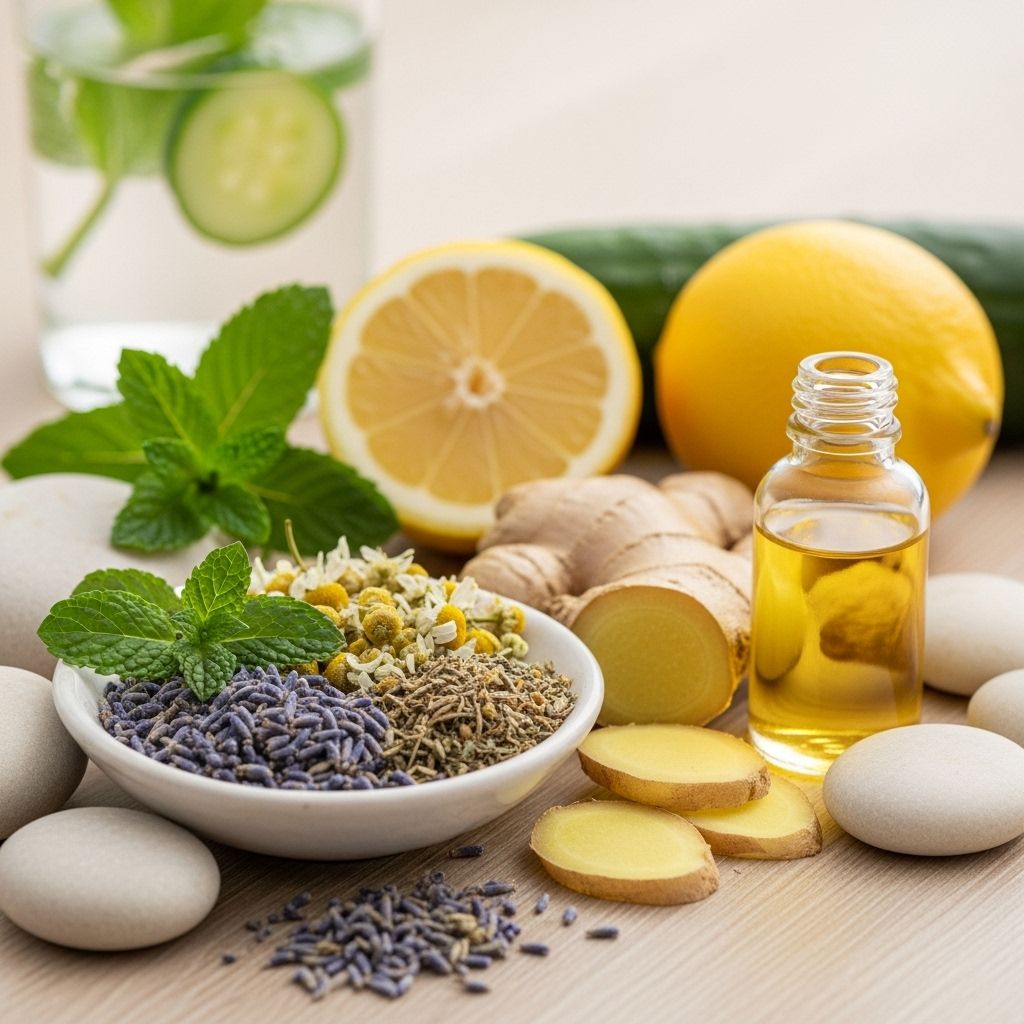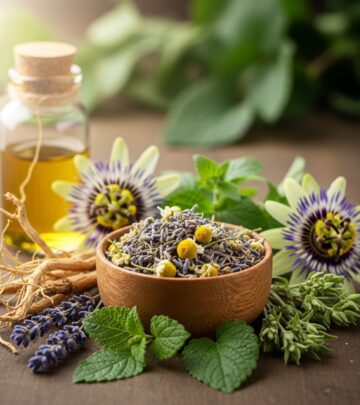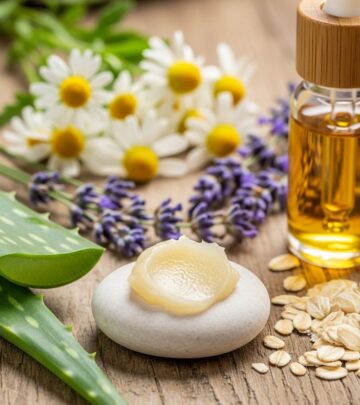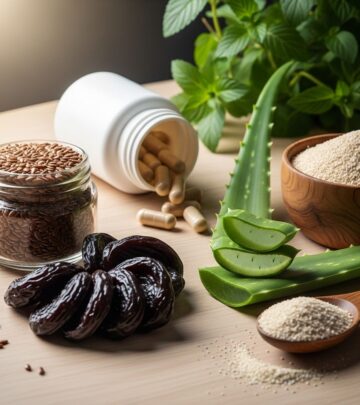15 Natural Remedies for Migraines That Work Fast
Discover effective and fast-acting natural remedies to reduce migraine pain, including essential oils, dietary changes, lifestyle tips, and holistic treatments.

Migraines are not just ordinary headaches—they are intense, often debilitating neurological events accompanied by throbbing pain, visual disturbances, nausea, and heightened sensitivity to light and sound. While medications provide relief for many, a growing number of people are turning to natural remedies to manage migraine attacks and prevent future episodes. This article explores 15 of the most effective natural solutions for fast migraine relief, offering actionable strategies rooted in both traditional wisdom and modern research.
Understanding Migraines: Symptoms and Triggers
Migraines typically present with a range of symptoms, including:
- Intense, throbbing pain (often on one side of the head)
- Nausea or vomiting
- Sensitivity to light, sound, or smells
- Visual disturbances or aura
- Fatigue and irritability
Common triggers include stress, hormonal changes, certain foods, dehydration, changes in sleep, and environmental factors. A holistic approach to prevention and relief involves identifying triggers and deploying effective natural remedies.
1. Essential Oils: Lavender and Peppermint
Among natural migraine remedies, essential oils—particularly lavender and peppermint—stand out for their fast action and accessibility.
- Lavender oil has calming and sedative properties. Inhaling lavender oil or applying it (diluted) to the temples may reduce migraine pain and anxiety.
- Peppermint oil helps relax tense muscles and improves circulation. Applying diluted peppermint oil to the temples and forehead may provide a cooling, analgesic effect.
How to use:
- Add 5 to 10 drops of lavender or peppermint essential oil to a bowl of hot water, inhale deeply for several minutes.
- Mix a few drops with a carrier oil (such as coconut or almond oil) and massage onto the temples, forehead, and back of the neck.
2. Magnesium: The Migraine Mineral
Magnesium deficiency is linked to increased migraine frequency and severity. Magnesium supports nerve function, helps regulate neurotransmitters, and eases blood vessel constriction, all of which are key in migraine prevention.
- Foods high in magnesium: spinach, pumpkin seeds, almonds, black beans, avocado, bananas, and leafy greens.
- Magnesium supplements (consult your healthcare provider for appropriate dosage).
3. Riboflavin (Vitamin B2)
Vitamin B2 (riboflavin) is essential for energy production in brain cells. Clinical studies demonstrate that regular, high-dose riboflavin supplementation (typically 400mg daily) can reduce migraine frequency and duration.
- Dietary sources: organ meats, eggs, dairy, leafy greens, nuts, and legumes.
- Consider B2 supplements for targeted prevention.
4. Hydration: Prevent Dehydration
Dehydration is a well-known migraine trigger. Ensuring adequate fluid intake can help minimize attacks.
- Aim for 8–10 glasses of water daily.
- Include hydrating foods such as cucumber, watermelon, and citrus fruits in your diet.
- Avoid excessive caffeine or alcohol, which can dehydrate the body.
5. Identify and Avoid Trigger Foods
Certain foods are recognized migraine triggers. Common culprits include:
- Aged cheeses
- Processed meats
- Artificial sweeteners (aspartame, sucralose)
- Chocolate
- Alcohol (especially red wine)
- Monosodium glutamate (MSG)
Keep a food diary to identify your personal triggers and gradually eliminate or reduce those foods from your diet.
6. Feverfew: Ancient Herb for Modern Relief
Feverfew is an herb traditionally used to treat headaches and migraines. Its active components, notably parthenolide, are believed to decrease inflammation and prevent blood vessel dilation in the brain.
- Available as capsules, tablets, or tea.
- May reduce frequency and intensity of migraines when used consistently.
- Consult a healthcare provider before starting, especially if pregnant or taking other medications.
7. Butterbur: Root Extract for Vascular Support
Butterbur is another traditional migraine remedy with support from modern research. Specific extracts (PA-free to remove toxic alkaloids) help stabilize blood vessel tone and reduce inflammation in the brain, decreasing migraine frequency.
- Effective dose: typically 75mg twice daily of PA-free extract.
- Should be sourced carefully due to potential liver toxicity from non-purified forms.
8. Omega-3 Fatty Acids: Inflammation Fighters
Omega-3s possess powerful anti-inflammatory properties that help reduce neuroinflammation, a factor in migraine development. These fatty acids also support brain and vascular health.
- Rich sources: fatty fish (salmon, sardines), flaxseeds, walnuts, chia seeds.
- Fish oil supplements can support intake, especially for those with diet restrictions.
9. Coenzyme Q10 (CoQ10)
Coenzyme Q10 is a vital antioxidant that boosts mitochondrial function and improves cellular energy in the brain. Supplementing with CoQ10 has been shown to reduce migraine frequency and severity in some studies.
- Common dosage for migraine: 100–150mg, taken 2–3 times daily.
10. Acupressure
Acupressure involves applying firm pressure to specific points on the body to alleviate pain and tension. A popular point for headache and migraine relief is the LI-4 point, located between the base of the thumb and index finger.
- Use gentle, circular pressure on the LI-4 point for 2–3 minutes.
- Repeat on the opposite hand.
- Acupressure can be administered by a professional or self-applied with guidance.
11. Ginger: Nature’s Anti-Inflammatory
Ginger eases nausea (a common migraine symptom) and reduces inflammation. Studies show it may be as effective as some medications in easing acute migraine pain.
- Add fresh ginger to teas, juices, or meals.
- Take ginger supplements/capsules as per the recommended dose.
12. Lifestyle Strategies: Sleep, Stress, and Routine
Improving sleep hygiene, managing stress, and maintaining a consistent daily routine are essential for migraine prevention.
- Follow a regular sleep schedule—wake up and go to sleep at the same time daily.
- Practice stress-reducing activities: yoga, meditation, deep breathing exercises.
- Avoid skipping meals and maintain stable blood sugar through regular, balanced meals.
13. Cold and Warm Compresses
Applying a cold compress to the forehead or temples can constrict blood vessels and numb pain, often providing rapid relief. In some cases, a warm compress may be more comforting, especially for tension headaches accompanying migraines.
- Use a gel ice pack or a washcloth soaked in cold water over the area of pain.
- Alternatively, use a warm towel or heating pad on the neck or back of the head if tension is present.
14. Raw Potato Slices
Though lacking scientific backing, the use of raw potato slices for migraine pain is rooted in European folk medicine. Potato slices are wrapped in a thin cloth and applied directly to the forehead or temples to calm pain.
- Place thick slices of raw potato on the temples and secure with a soft cloth during an attack.
- Remove after 15–20 minutes and rinse skin.
15. Herbal Teas: Linden and Others
Linden tea (from the blossoms of the Tilia or lime tree) is traditionally used to relieve tension, promote relaxation, and aid in sleep, all of which are helpful during a migraine. Other herbs, such as valerian and chamomile, also provide calming effects.
- Steep linden or chamomile blossoms in hot water for 5–10 minutes; sweeten lightly if desired.
- Sip slowly during the onset or full attack to ease anxiety and tension.
Table: Common Natural Remedies and Their Primary Benefits
| Remedy | Action/Benefit |
|---|---|
| Lavender & Peppermint Oil | Analgesic, calming, reduces pain and anxiety |
| Magnesium | Regulates nerves, prevents attacks, eases vascular tension |
| Vitamin B2 (Riboflavin) | Improves brain energy, reduces frequency |
| Feverfew | Reduces inflammation, stabilizes blood vessels |
| Butterbur | Anti-inflammatory, vascular support |
| Omega-3 Fatty Acids | Decreases inflammation, supports brain health |
| Ginger | Relieves nausea, anti-inflammatory |
| Linden Tea | Reduces tension, calms nerves |
Frequently Asked Questions (FAQs) About Natural Migraine Relief
Q: Are natural remedies as effective as medication?
A: Some natural remedies have been shown to reduce migraine frequency and severity, but their effectiveness varies by individual. They can be used alongside (or in some cases instead of) conventional medications, but it’s important to consult a healthcare provider before significant changes.
Q: Can dietary changes make a noticeable difference?
A: Yes, avoiding known trigger foods, staying hydrated, and eating a balanced diet rich in magnesium and vitamins can significantly reduce migraine frequency for many people.
Q: Is it safe to use herbs and supplements during pregnancy?
A: Not all herbal remedies or supplements are safe during pregnancy. Always consult a healthcare provider before starting any new remedy while pregnant or breastfeeding.
Q: How do I identify which remedy works best for me?
A: Keep a detailed migraine diary, noting the use of each remedy, diet, stress, sleep, and migraine occurrence and severity over time. This can help pinpoint the most effective strategies for your unique needs.
Q: Does acupressure really help with migraines?
A: Many individuals find acupressure at points like LI-4 offers noticeable pain relief with minimal risk. Its effectiveness can vary, but several studies support its use as part of a holistic approach.
Safety and Final Guidelines for Natural Migraine Treatments
While natural remedies can offer substantial relief, it is crucial to approach them with care:
- Always consult your healthcare provider before starting new supplements, herbs, or significant dietary changes—especially if you have other health conditions or take prescription medications.
- Not every remedy is safe for everyone (e.g., butterbur should be PA-free; feverfew is not for those on blood thinners).
- Be patient and consistent—some remedies require daily use over several weeks for noticeable results.
Combining several of these approaches—as advised by your healthcare professional—can help you find the personalized, fast-acting migraine relief you need, restoring comfort and control over your life. Migraines don’t have to rule your days: with these natural strategies, relief can be both fast and lasting.
References
- https://www.healthline.com/health/migraine-herbal-home-remedies-from-around-the-world
- https://theorganiccompoundingpharmacy.com/blogs/health-wellness-blog/natural-migraine-relief-how-to-prevent-migraines-with-lifestyle-changes-and-supplements
- https://draxe.com/health/how-to-get-rid-of-a-migraine/
- https://www.medicalnewstoday.com/articles/322814
- https://organiclifestylemagazine.com/issue/15-natural-remedies-for-migraines-that-work-fast
- https://organiclifestylemagazine.com/issue/15-how-to-cure-migraines-for-good
- https://pmc.ncbi.nlm.nih.gov/articles/PMC4685182/
- https://headacheaustralia.org.au/natural-alternatives-migraine-headache/
Read full bio of medha deb












